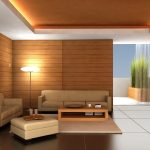Introduction
Structural design is the backbone of civil engineering, combining mathematics, physics, and creativity to create remarkable works of construction. These designs form the framework for our buildings, bridges, and infrastructure, ensuring they stand tall and strong against the forces of nature. In this blog, we will delve into the captivating realm of structural designs, exploring the principles, innovations, and iconic structures that exemplify this awe-inspiring field.
The Science of Stability
At the heart of structural design lies the fundamental concept of stability. Engineers must consider the forces acting upon a structure, including gravity, wind, seismic activity, and more. By applying principles of physics and mathematics, they develop designs that distribute these forces effectively, preventing deformation or failure.
One of the most iconic examples of stability in structural design is the Eiffel Tower in Paris, designed by Gustave Eiffel. Its lattice-like structure distributes wind loads efficiently and allows it to withstand both gravity and lateral forces, making it an enduring symbol of engineering excellence.
Innovation in Materials
Advancements in material science have revolutionized structural design. From ancient stone and timber structures to modern steel, concrete, and composite materials, engineers continually push the boundaries of what is possible.
The use of reinforced concrete, as seen in the Burj Khalifa, the world’s tallest building, is a testament to the innovation in materials. Designed by Adrian Smith of SOM, this skyscraper’s combination of high-strength concrete and steel reinforcement provides both strength and flexibility, allowing it to reach astonishing heights.
Aesthetics Meets Engineering
Structural design is not solely about function; aesthetics also play a significant role. Many structures are celebrated for their architectural beauty and innovative design.
The Millau Viaduct in France, designed by Sir Norman Foster, is an engineering marvel that seamlessly blends aesthetics and function. Its slender, elegant piers and curved roadway provide both a breathtaking visual experience and a practical solution for crossing the Tarn River gorge.
Sustainable Structural Design
In today’s world, sustainability is at the forefront of structural design. Engineers aim to create structures that minimize environmental impact and reduce energy consumption. This approach involves using eco-friendly materials, optimizing energy efficiency, and incorporating renewable energy sources.
The Bullitt Center in Seattle, designed by The Miller Hull Partnership, is a prime example of sustainable structural design. It is a “living building” that generates its energy from solar panels, collects rainwater, and uses non-toxic materials, setting new standards for green construction.
Computational Tools and Analysis
Modern structural design benefits greatly from computational tools and advanced analysis techniques. Finite element analysis, computer-aided design (CAD), and simulation software enable engineers to model and optimize structures with incredible precision and efficiency.
These tools were instrumental in the construction of the Millau Viaduct, allowing engineers to simulate various load scenarios and fine-tune the design for maximum safety and performance.
Conclusion
Structural design is an awe-inspiring field that merges the realms of science and art. It’s a testament to human ingenuity and our ability to create incredible structures that define our landscapes and improve our lives. From the great pyramids of Egypt to the cutting-edge skyscrapers of today, structural design has played a pivotal role in shaping the world around us. As we move forward, this field will continue to evolve, pushing the boundaries of what is possible and leaving us with even more engineering marvels to marvel at and admire.







